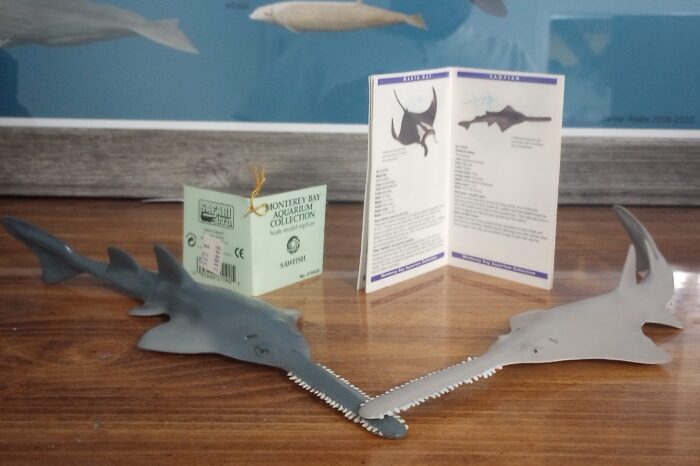Not to be conflated with sawsharks, sawfish are a family of rays belonging to the Pristidae family. This family is distinguished by an elongated rostrum. This “saw” is equipped with specialized external “teeth” and sensory structures to aid in electroreception and prey capture. Sawfish share ancestral affinities with the guitarfish. Currently, five species across two genera are recognized.
Author: Callmejoe3
All reviews by this author
Elephant Seal (Marine Life by Papo)

The elephant seals (Mirounga spp.) are easily among the most visually striking pinnipeds. Two species respectively inhabitat the coasts of the North Pacific (M. angustirostris) and Southern Hemisphere (M. leoninae). Elephant seals exhibit the most extreme sexual dimorphism amongst pinnipeds and most mammals.
Sperm Whale, adult and calf (Monterey Bay Aquarium Collection by Safari Ltd.)

For author’s summary of species look here
This will be the last review of a cetacean species from the Monterey Bay Aquarium collection, the sperm whale adult and calf pair.
The adult female measures 29 cm, which corresponds to an 11.6 m whale at the marketed 1:40 scale. Above, you can see it scales well with the Safari Sea Life giant squid (24.5 cm/9.8 m) and the CollectA basking shark (22 cm/ 8.8 m).
Northern Fur Seal (Enoshima Aquarium Series 2 by Kaiyodo)
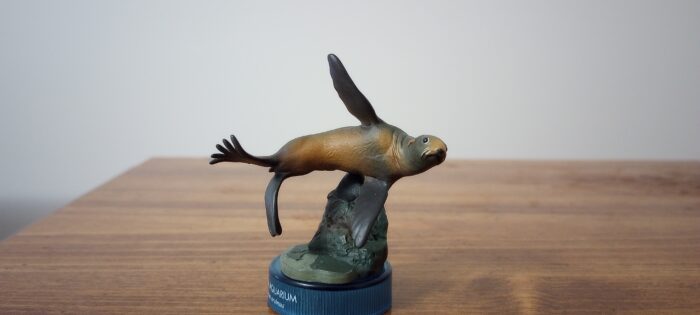
The northern fur seal (Callorhinus ursinus) is among the most widespread otariids of the North Pacific. This species, like other ”fur seals”, is more closely related to sea lions than to ”true seals”. This species is mostly pelagic, living across the North Pacific, Bering Sea, and Sea of Okhotsk.
Muskox (Wildlife by CollectA)
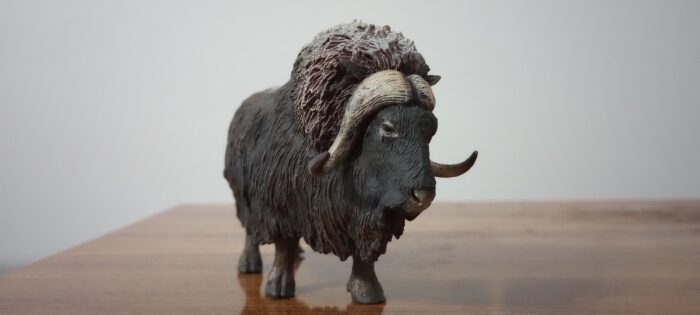
For author’s summary of species look here
Over this past year, I’ve made the choice to replace my Schleich Muskox with CollectA’s version. With a shoulder height of about 6.5cm, this figure roughly belongs to the 1:18-1:23 scale. This places it well within the range of most other figures of large terrestrial animals.
Killer Whale, adult and calf (Monterey Bay Aquarium by Safari Ltd.)
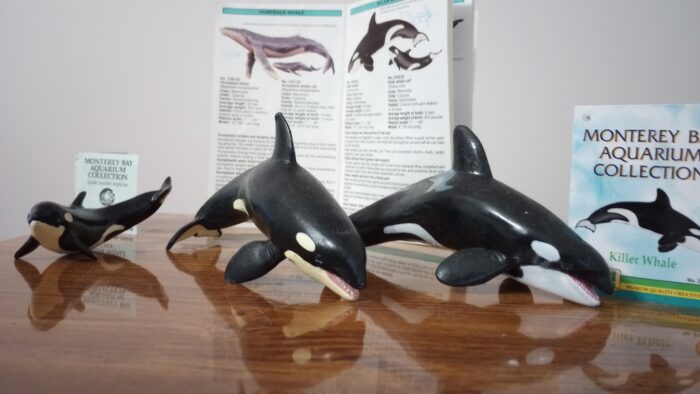
For the author’s overview of this species, please see this review
Despite many killer whale figures having been produced, it has been about 2 years since I’ve last covered this species. Most of them tend to fall short of my standards, but maybe things will be different for the Monterey Bay Aquarium series that rarely leaves me disappointed.
Green Iguana (Wildlife by CollectA)

Aside from large crocodilians and tortoises, one of the most iconic reptiles of the Americas would be the green iguana (Iguana iguana). Green iguanas are native to South and Central America with invasive populations in parts of North America and the Caribbean. Taxonomy within this species has been controversial, with the current convention being the recognition of tentative subspecies.
Blue Whale (Scientific Art Sculptures by PNSO)

74 years ago from this very day, Lt. Col. Waldon C. Winston witnessed and documented what he noted as the largest whale to have ever been weighed. Winston was aboard the Kyo Maru No.6. during the 1947/48 Antarctic whaling season as an observer to ensure the Japanese whalers complied with the International Whaling Regulations and directives issued by General Douglass MacArthur.
Bottlenose Dolphin, adult and calf (Monterey Bay Aquarium by Safari Ltd)

Great Hammerhead Shark (Monterey Bay Aquarium Collection from Safari Ltd)
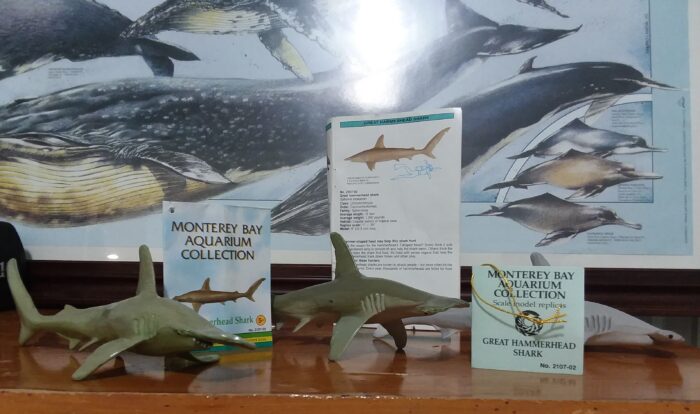
Pacific White-Sided Dolphin (Monterey Bay Aquarium Collection by Safari Ltd.)

While the more popular cetacean species exist in most parts of the world, there exist many that are confined to their own little corner of the ocean, such as the North Pacific white-sided dolphin (Sagmatias obliquidens). These dolphins exist across the entire span of the North Pacific.
South African Penguin (Sealife by CollectA)
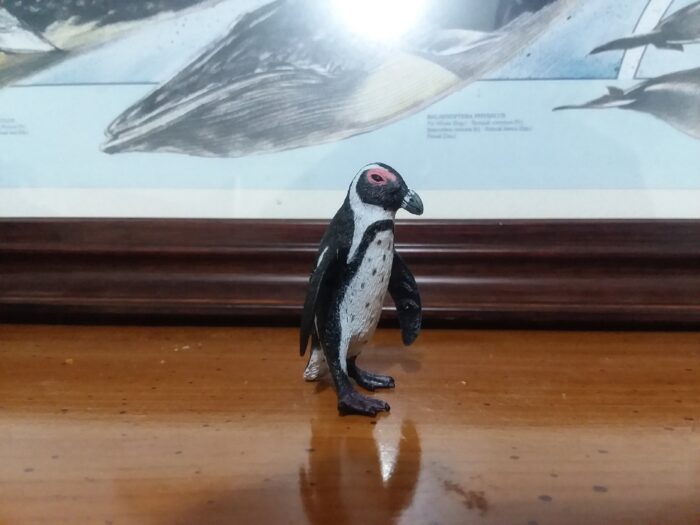
Alas, the South African Penguin (Spheniscus demersus), is unfortunately dubbed the ”Jackass Penguin” for its donkey-like sounds.

